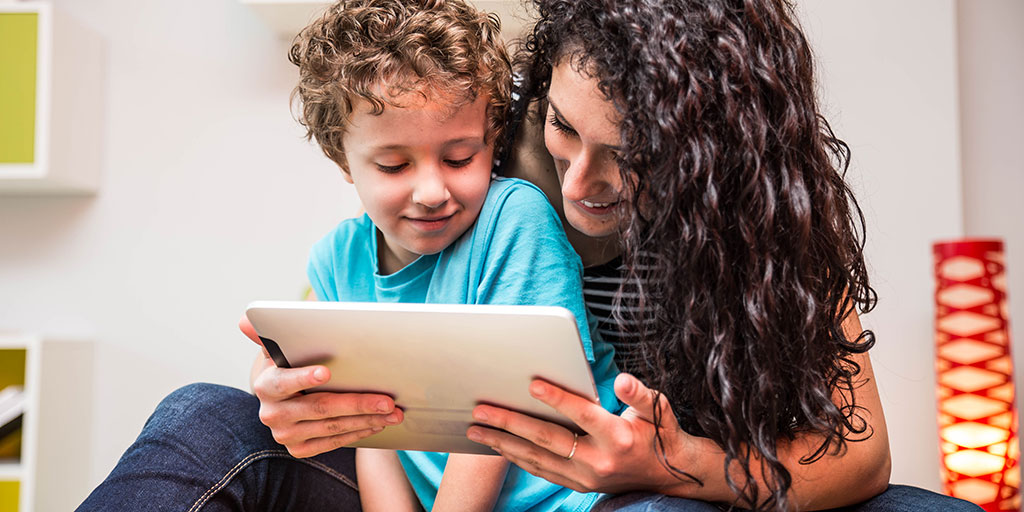As children are increasingly born into and are adapting to an environment where technology is a feature of the everyday, concerns for their safety have also risen for parents. The question is how you can keep them safe online whilst making sure they get to enjoy all the great things that it has to offer.
We’ve compiled some basic methods to help keep your children safe and keep you as a parent informed.
Communication is key
Communication is your best tool for keeping your kids safe when they’re online but it’s often difficult to know when to start. Kids are growing up in a situation where technology and its connectivity are difficult to divorce from their lives. Starting a conversation can be the most difficult situation to entertain especially when so much of a child’s development as individuals is based on how they use internet-connected devices.
Firstly, you need to make it clear that you are interested in their lives offline and online. The internet can be used to foster relationships with friends from school, put together school projects and do research. If it sounds as though they’re being grilled, they’re unlikely to come to you in the future if they’re in trouble.
Secondly, use the time you have to ask about the types of apps and websites they’re using. This could be an opportunity to learn about how they work and what tools they use. You can broach it as a teaching opportunity for you and at the same time find out about how they work and which platforms they’re using.
Social media apps provide lots of ways for children to communicate but they are at risk of receiving inappropriate content, being bullied, or even being groomed. If you hear anything you find questionable or worrying, you need to make it clear to them how they should be treated. Keeping them involved in the decision-making means you can stay involved, and you can set rules that they’ll agree to, rather than something you’ll have to reprimand them about.
Exercise caution with online gaming and toys
There are an array of activities and toys for kids that use the internet as part of their functionality. Games consoles, online computer games, apps and some interactive educational tools will use the internet as a default. Online facilities often mean that children can be at risk when playing games with a community of people who aren’t necessarily in a similar age group to them. It can open them up to inappropriate content, conversations, and situations.
Whether it’s a present or something you invest in for them, make sure you do some background research before they get too comfortable using it. It might be that you need to decide whether it’s realistically something that is suitable for your child. Not just based on their age, but your assessment of their ability and maturity.
Once you understand how and why they connect to the internet, you can start assessing whether they even need that feature for them to be usable. Even using old phones and other portable devices can still be used with WiFi connections. When you limit their interactions with online communities but don’t have the time to input other parental controls, you might want to consider more age-appropriate physical toys and games until you can get a handle on it.
Next are default settings that often prompt you to check them to improve the quality of a gaming experience or to aid the company with fixes. Turn off settings such as GPS location tracking, public WiFi, camera and chat access, to maintain your child’s anonymity online. Privacy settings should always be switched on if the devices they are handling become personal ones.
The next step is to create accounts specifically for your children with age-appropriate content. Services such as Netflix or Prime allow you to create child-friendly profiles, with content that is geared towards education or a particular age range.
Use parental controls & manage access
Parental controls help you to block any unfriendly or inappropriate content and purchases within apps or on devices. It can help you manage how much time your child spends on the internet, can filter or block apps with inappropriate content and can manage different family members profiles. For help installing parental controls on your devices, TV services and home internet, go to the NSPCC website for more information.
It’s inadvisable for children under the age of eleven to have social media profiles. Any profiles they have at that age can be used for inappropriate content. If they do have these profiles, they should be managed by an adult for the majority of the time. Any profiles should have their privacy settings restricted. On Instagram, for example, you can make an account private, restrict chatting, bullying and inappropriate content from a feed that your child will use.
Warn your child against sending pictures of themselves in any capacity to people they do not know. Encourage them to post pictures of the things they like, such as a Disney character or an actor they follow, rather than themselves. This way they can represent themselves as individuals without being at risk.


